July 4, 2018
by Robbie LaFleur
The fall class catalog for the Weavers Guild of Minnesota has just been released. Here are the classes related to Scandinavian techniques. Sign up soon! See the rich slate of all classes offered by the Guild here.
Swedish Art Weaves with Jan Mostrom

Swedish art weaves are at their best in the highly decorated weavings of the Skåne area of Sweden. Dukagång, krabbasnår and halvkrabbe are woven in a similar manner using butterflies to inlay designs, but each have a distinctive look. Dukagång is made up of columns. Krabbasnår designs move on a diagonal while halvkrabbe is made up of squares like a checkerboard. Rölakan is a geometric tapestry technique that is also seen in the weavings of Skåne. Students will weave a sampler of these techniques, discuss color choices, finishing techniques and ideas for making a sampler into a pillow or bag.
Monday, Tuesday, Wednesday & Friday, September 10, 11, 12 & 14: 10:00am – 4:00pm | REGISTER
*Note: This class requires some independent weaving time on Thursday, September 13 as well.
Level and Prerequisites: Intermediate: Requires some experience in the subject and the ability to start and finish projects. Students must be able to wind a warp, warp a floor loom and read a draft independently.
Tuition: $240 WGM Member / $312 Non-member
Warp-Weighted Loom Weaving: Sami-Inspired Grene Blanket or Rug with Melba Granlund
 Learn to weave on the historic warp-weighted loom. Used for millennia in many parts of the world, the warp-weighted loom is easy to use and is the traditional loom of the Norwegian sea Sami today. In this class, you will learn how to use the warp-weighted loom and weave a small Sami-inspired rug or blanket (grene). This project is suitable for beginning weavers and for those who want to expand their knowledge of weaving traditions. Warp yarn will be provided by the instructor and is included in the materials fee. Students may use handspun yarns or purchase commercial yarn for weft. Options for weft yarn will be viewed and discussed prior to class beginning allowing students time to obtain yarn of their choice.
Learn to weave on the historic warp-weighted loom. Used for millennia in many parts of the world, the warp-weighted loom is easy to use and is the traditional loom of the Norwegian sea Sami today. In this class, you will learn how to use the warp-weighted loom and weave a small Sami-inspired rug or blanket (grene). This project is suitable for beginning weavers and for those who want to expand their knowledge of weaving traditions. Warp yarn will be provided by the instructor and is included in the materials fee. Students may use handspun yarns or purchase commercial yarn for weft. Options for weft yarn will be viewed and discussed prior to class beginning allowing students time to obtain yarn of their choice.
Saturday, November 3: 1:15pm – 2:15pm; Monday – Wednesday, December 3 – 5: 10:00am – 4:00pm; Saturday, December 8: 10:00am – 4:00pm | REGISTER
Level: Beginning – no experience necessary!
Tuition: $250 WGM Member / $325 Non-member Student
Nålbinding I: Winter Cap with Melba Granlund
 Learn the folk art tradition of nålbinding using a handcrafted wooden needle and continuous strand of wool yarn. While this looping technique was used by the Vikings to make warm garments such as socks and mittens, artifacts dating back 3,000 years show that articles made in nålbinding have been found around the world. In this class, you will learn basic nålbinding stitches to make a hat. Current samples, as well as pictures of historical pieces from Norway, Sweden and Finland, will be shown as inspiration. Discussion of yarns suitable for nålbinding will be covered during the first class. Instructor will provide students with practice yarn to begin. Students can bring their own needle or purchase a handcrafted wooden needle from the instructor
Learn the folk art tradition of nålbinding using a handcrafted wooden needle and continuous strand of wool yarn. While this looping technique was used by the Vikings to make warm garments such as socks and mittens, artifacts dating back 3,000 years show that articles made in nålbinding have been found around the world. In this class, you will learn basic nålbinding stitches to make a hat. Current samples, as well as pictures of historical pieces from Norway, Sweden and Finland, will be shown as inspiration. Discussion of yarns suitable for nålbinding will be covered during the first class. Instructor will provide students with practice yarn to begin. Students can bring their own needle or purchase a handcrafted wooden needle from the instructor
Saturday & Sunday, September 22 & 23: 1:00pm – 5:00pm | REGISTER
Level: Beginning – no experience necessary!
Tuition: $88 WGM Member / $112 Non-member
Try It! Sami-Inspired Bracelet with Katherine Buenger
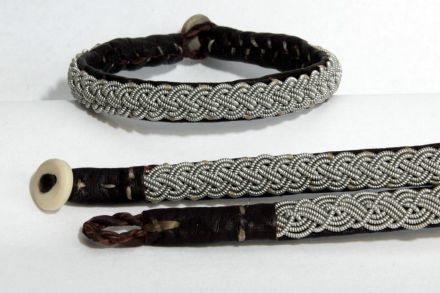 These bracelets are based on the designs of the Sami people, who are the native people from the far northern parts of Norway, Sweden, Finland, and Russia. The bracelets are constructed with traditional materials including reindeer leather, tin thread (4% silver), and reindeer antler buttons. Students will learn to make a four strand braid using tin thread, and then they will hand sew their piece to reindeer leather to finish an elegant bracelet.
These bracelets are based on the designs of the Sami people, who are the native people from the far northern parts of Norway, Sweden, Finland, and Russia. The bracelets are constructed with traditional materials including reindeer leather, tin thread (4% silver), and reindeer antler buttons. Students will learn to make a four strand braid using tin thread, and then they will hand sew their piece to reindeer leather to finish an elegant bracelet.
Saturday, October 6: 1:00pm – 5:00pm | REGISTER
Level: Beginning – no experience necessary!
Tuition: $48 WGM Member / $60 Non-member
Swedish Kavelfrans – Minnesota Style with Robbie LaFleur
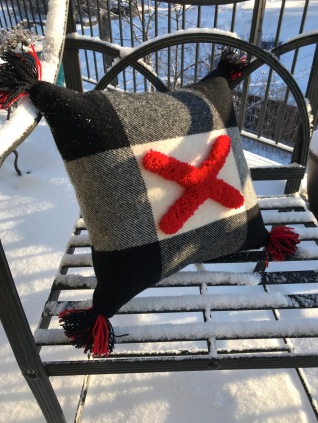 Inspired by historical mitten trim, contemporary Swedish knitters, weavers, and embroiderers love to add kavelfrans—fuzzy, wooly worms to grace mitten cuffs, pillows, bags, or other handwoven or commercial items. In this three-hour class you will learn a two-pronged fork method to wind the base fringes, securing them by hand or sewing machine. After sewing down layers of the prepared loops, we’ll learn to steam and clip to make the irresistible thick edging. Students can bring a pair of hand-knit or purchased mittens or gloves to embellish (the instructor will have a limited number of gloves to purchase), or add kavelfrans to a Swedish-inspired wool pincushion (materials can be purchased from the instructor). With discussion of the best materials to use, and many examples of items made with kavelfrans, the class is a combination of design inspiration and technique. Richly-illustrated instruction booklets and kavelfrans forks will be available for purchase. (For links to more photos and information, type kavelfrans in the search box on Robbie’s blog, robbielafleur.com.)
Inspired by historical mitten trim, contemporary Swedish knitters, weavers, and embroiderers love to add kavelfrans—fuzzy, wooly worms to grace mitten cuffs, pillows, bags, or other handwoven or commercial items. In this three-hour class you will learn a two-pronged fork method to wind the base fringes, securing them by hand or sewing machine. After sewing down layers of the prepared loops, we’ll learn to steam and clip to make the irresistible thick edging. Students can bring a pair of hand-knit or purchased mittens or gloves to embellish (the instructor will have a limited number of gloves to purchase), or add kavelfrans to a Swedish-inspired wool pincushion (materials can be purchased from the instructor). With discussion of the best materials to use, and many examples of items made with kavelfrans, the class is a combination of design inspiration and technique. Richly-illustrated instruction booklets and kavelfrans forks will be available for purchase. (For links to more photos and information, type kavelfrans in the search box on Robbie’s blog, robbielafleur.com.)
Sunday, October 14: 1:00pm – 4:00pm | REGISTER
Level: Beginning – no experience necessary!
Tuition: $36 WGM Member / $45 Non-member










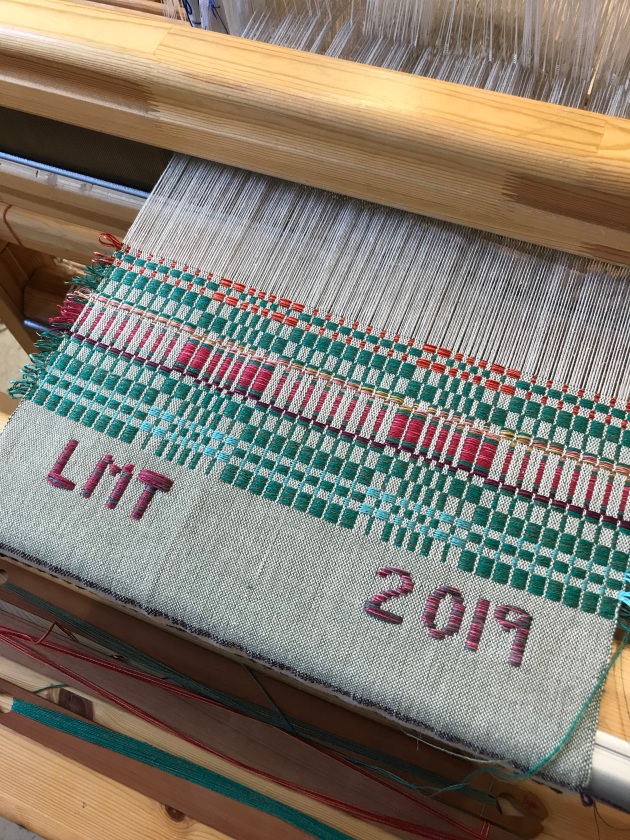


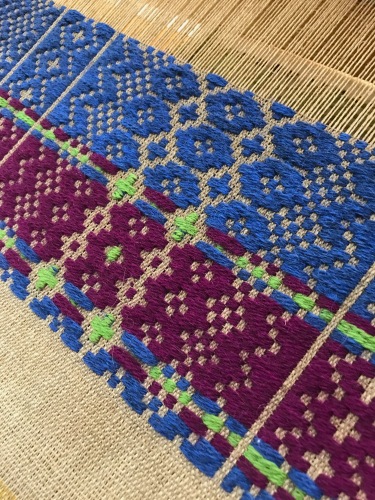



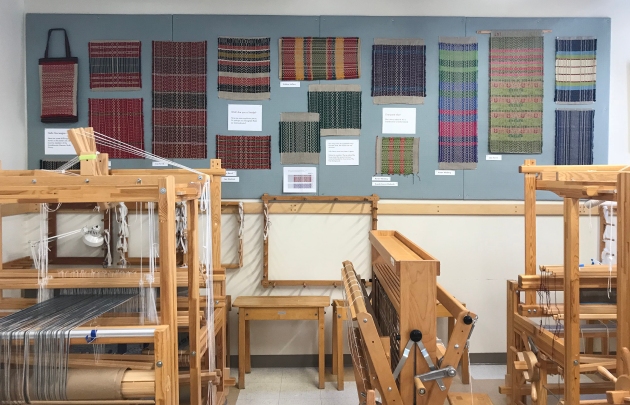

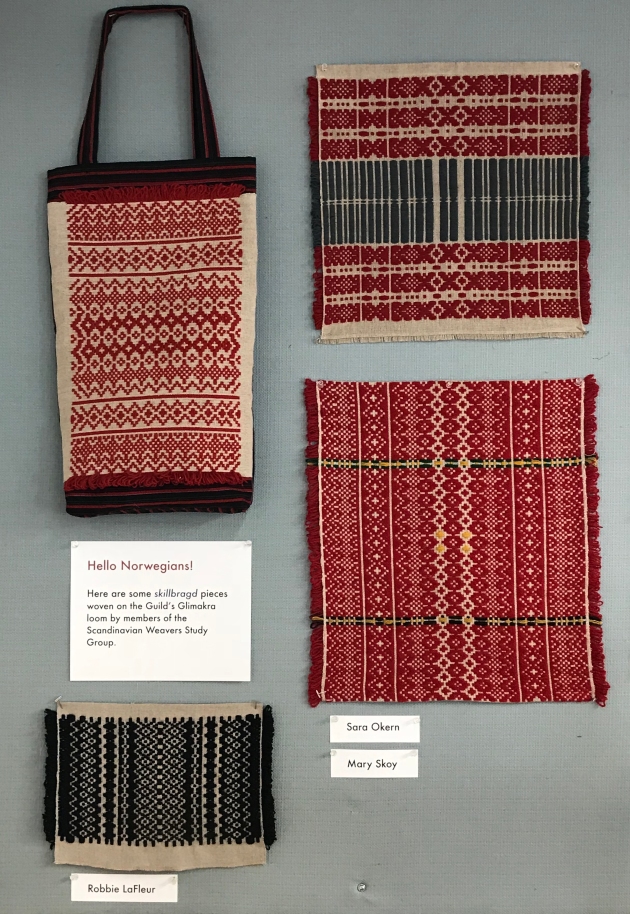


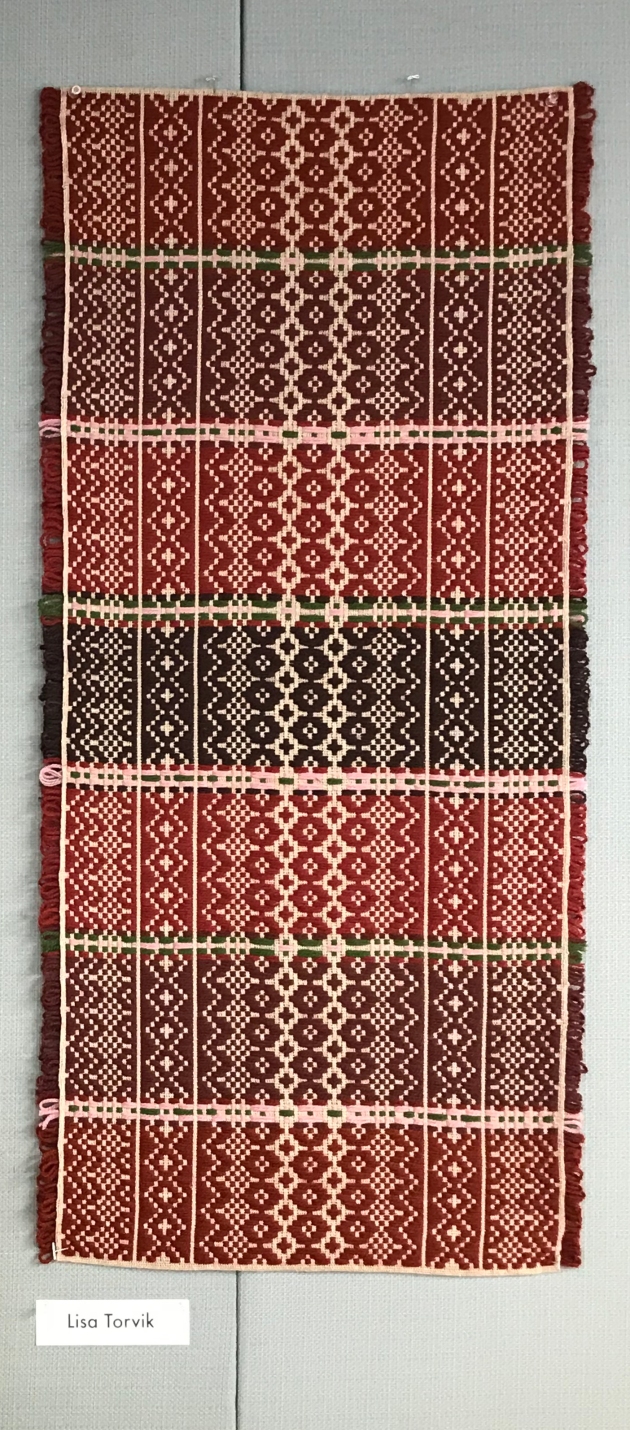


 Swedish art weaves are at their best in the highly decorated weavings of the Skåne area of Sweden. Dukagång, krabbasnår and halvkrabbe are woven in a similar manner using butterflies to inlay designs, but each have a distinctive look. Dukagång is made up of columns. Krabbasnår designs move on a diagonal while halvkrabbe is made up of squares like a checkerboard. Rölakan is a geometric tapestry technique that is also seen in the weavings of Skåne. Students will weave a sampler of these techniques, discuss color choices, finishing techniques and ideas for making a sampler into a pillow or bag.
Swedish art weaves are at their best in the highly decorated weavings of the Skåne area of Sweden. Dukagång, krabbasnår and halvkrabbe are woven in a similar manner using butterflies to inlay designs, but each have a distinctive look. Dukagång is made up of columns. Krabbasnår designs move on a diagonal while halvkrabbe is made up of squares like a checkerboard. Rölakan is a geometric tapestry technique that is also seen in the weavings of Skåne. Students will weave a sampler of these techniques, discuss color choices, finishing techniques and ideas for making a sampler into a pillow or bag.






